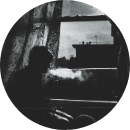Read the following passage and mark the letter A, B, C, or D on your answer sheet to indicate the correct answer to each of the questions from 35 to 42.
Glass is a remarkable substance made from the simplest raw materials. It can be colored or colorless, monochrome or polychrome, transparent, translucent, or opaque. It is lightweight impermeable to liquids, readily cleaned and reused, durable yet fragile, and often very beautiful Glass can be decorated in multiple ways and its optical properties are exceptional. In all its myriad forms - as table ware, containers, in architecture and design - glass represents a major achievement in the history of technological developments.
Since the Bronze Age about 3,000 B.C., glass has been used for making various kinds of objects. It was first made from a mixture of silica, line and an alkali such as soda or potash, and these remained the basic ingredients of glass until the development of lead glass in the seventeenth century. When heated, the mixture becomes soft and malleable and can be formed by various techniques into a vast array of shapes and sizes. The homogeneous mass thus formed by melting then cools to create glass, but in contrast to most materials formed in this way (metals, for instance), glass lacks the crystalline structure normally associated with solids, and instead retains the random molecular structure of a liquid. In effect, as molten glass cools, it progressively stiffens until rigid, but does so without setting up a network of interlocking crystals customarily associated with that process. This is why glass shatters so easily when dealt a blow. Why glass deteriorates over time, especially when exposed to moisture, and why glassware must be slowly reheated and uniformly cooled after manufacture to release internal stresses induced by uneven cooling.
Another unusual feature of glass is the manner in which its viscosity changes as it turns from a cold substance into a hot, ductile liquid. Unlike metals that flow or “freeze” at specific temperatures glass progressively softens as the temperature rises, going through varying stages of malleability until it flows like a thick syrup. Each stage of malleability allows the glass to be manipulated into various forms, by different techniques, and if suddenly cooled the object retains the shape achieved at that point. Glass is thus amenable to a greater number of heat-forming techniques than most other materials.
According to the passage, why can glass be more easily shaped into specific forms than can metals
A. It resists breaking when heated
B. It has better optical properties.
C. It retains heat while its viscosity changes.
D. It gradually becomes softer as its temperature rises.














